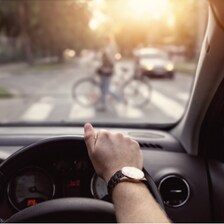6 Key Things To Know About The Updated Highway Code Change

The Highway Code contains legal requirements and acts as an essential guidance for all road users, be they drivers, motorcyclists, mobility scooter users, cyclists, horse riders or pedestrians. Haven’t read the Highway Code in a while? Here are the 6 key rules you need to know, with the new hierarchy of road users being the most significant change.
1. Road user hierarchy. This new addition to the code seeks to ensure that road users with the potential to do the most harm, have the most responsibility. For example, the driver of a car will have a greater responsibility to take care when interacting with a cyclist.
2. Giving priority to pedestrians at junctions. The update requires road users to give way to a pedestrian waiting to cross or already crossing a street, regardless whether they are on a zebra crossing.
3. Changing direction or turning into a lane. The Code requires a driver or motorcyclist to ensure that they do not cut across the path of a cyclist or horse rider/horse drawn vehicle.
4. Allowing adequate room to other road users. To make themselves more visible in certain situations, cyclists are now encouraged to ride in the centre of the lane. Drivers should also leave at least 1.5 metres when overtaking cyclists at speeds of up to 30mph, and give them more space when overtaking at higher speeds.
5. Priority is given to cyclists and horse riders/horse drawn vehicles on roundabouts: drivers should not attempt to overtake cyclists within that person’s lane. Also, motorists should allow people cycling to move across their path as they travel around the roundabout.
6. Parking & leaving vehicles. In order to protect other road users, a technique sometimes called the ‘Dutch Reach’ is recommended. This means drivers and passengers should open the door using their hand on the opposite side to the door they are opening. For example, using their left hand to open a door on their right-hand side. This will make them turn their head to look over their shoulder behind them. That way, they are less likely to cause injury to people cycling or pedestrians walking on the pavement.
The full list of changes can be found here.